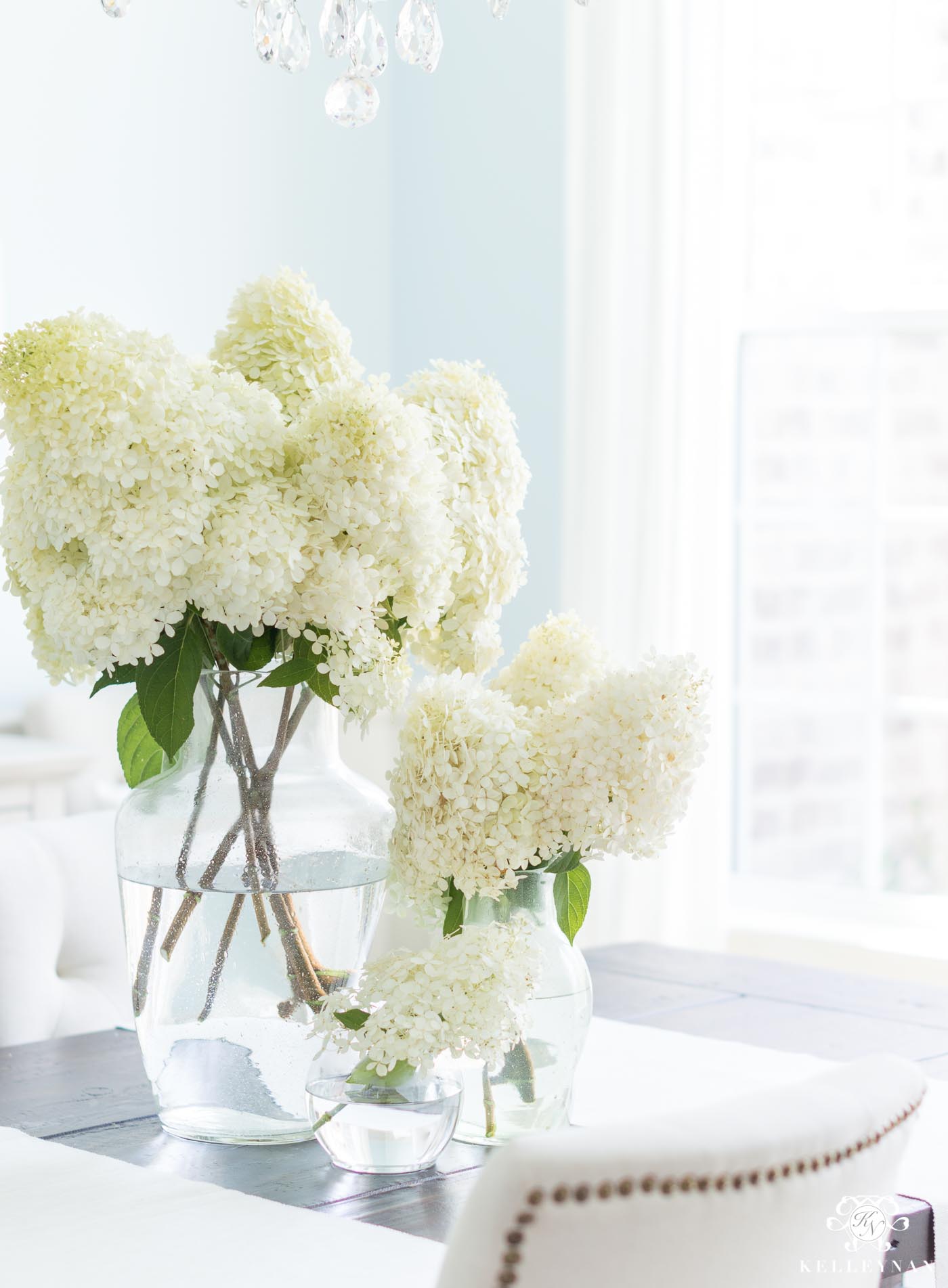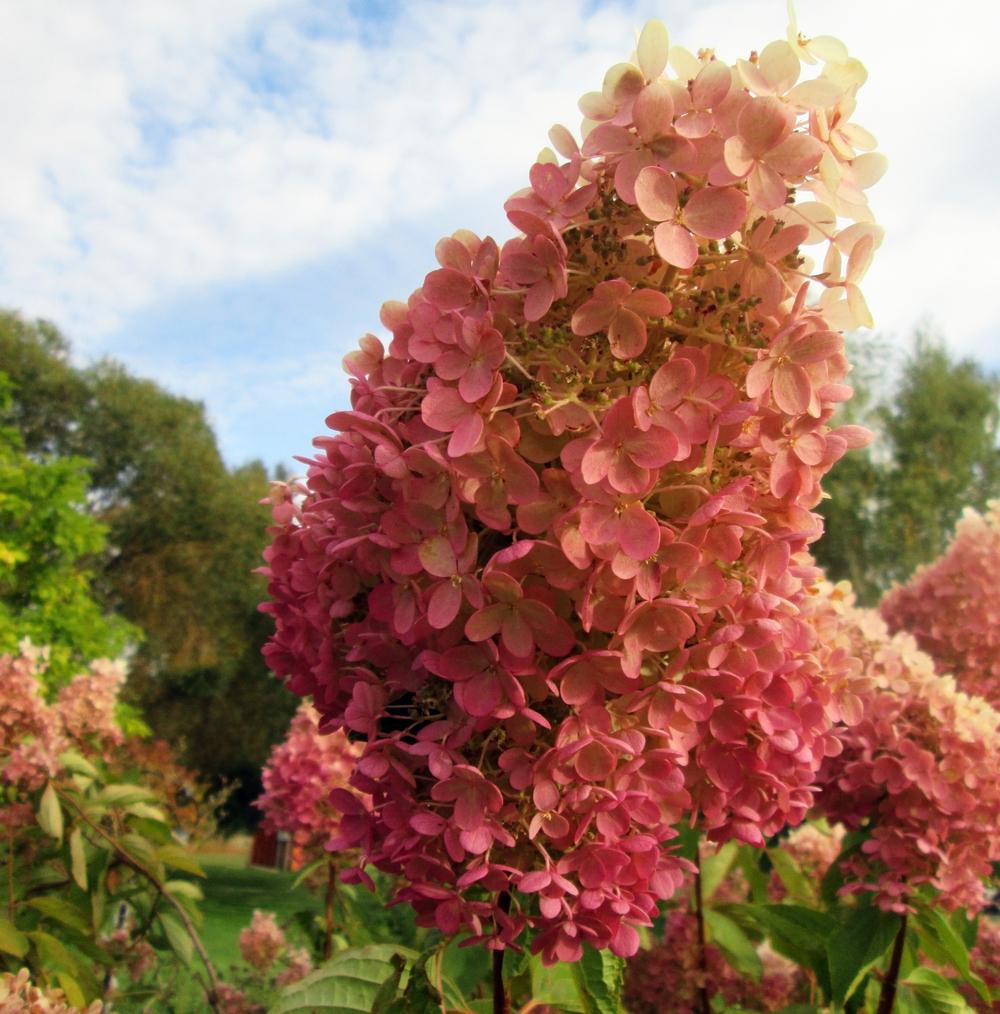Cone Hydrangeas: The Ultimate Guide To Growing And Caring For These Remarkable Plants
Cone hydrangeas (Hydrangea paniculata) are a type of hydrangea that is known for its large, cone-shaped flower clusters. They are a popular choice for gardens because they are relatively easy to care for and can be grown in a variety of climates.
In this blog post, we will provide an ultimate guide to growing and caring for cone hydrangeas. We will cover topics such as:
- Choosing the right location
- Planting and transplanting
- Watering and fertilizing
- Pruning
- Pests and diseases
We will also provide some tips on how to get the best blooms from your cone hydrangeas.
Choosing the Right Location
Cone hydrangeas prefer full sun to partial shade. They will tolerate some direct sunlight, but too much sun can scorch the leaves and flowers. If you live in a hot climate, it is best to plant your cone hydrangea in a location that gets some afternoon shade.
Cone hydrangeas also need well-drained soil. They are susceptible to root rot if the soil is too wet. If you have heavy clay soil, you will need to amend it with sand or compost to improve drainage.
Planting and Transplanting
The best time to plant cone hydrangeas is in the spring or fall. If you are planting in the spring, make sure to do it before the weather gets too hot. If you are planting in the fall, give the plant plenty of time to establish itself before the winter.
When planting, dig a hole that is twice as wide as the root ball of the plant. Backfill the hole with soil, tamping it down gently. Water the plant well after planting.
If you need to transplant a cone hydrangea, do it in the spring or fall. Dig up the plant carefully, making sure to keep as much of the root ball intact as possible. Transplant the plant into a hole that is the same size as the root ball. Water the plant well after transplanting.
Watering and Fertilizing
Cone hydrangeas need regular watering, especially during the first year after planting. Water the plant deeply once a week, or more often if the weather is hot or dry.
Cone hydrangeas also benefit from fertilization. You can fertilize your plant in the spring and fall with a balanced fertilizer. Be sure to follow the directions on the fertilizer label.
Pruning
Cone hydrangeas do not need to be pruned heavily. However, you should remove any dead, diseased, or damaged branches in the spring. You can also prune the plant to shape it or to encourage more blooms.
Pests and Diseases
Cone hydrangeas are relatively resistant to pests and diseases. However, they can be susceptible to aphids, scale, and powdery mildew. If you see any pests or diseases on your plant, treat them immediately with an appropriate pesticide or fungicide.
Getting the Best Blooms
To get the best blooms from your cone hydrangea, you will need to provide it with the right conditions. Make sure the plant is getting enough sun, water, and fertilizer. You should also prune the plant regularly.
If you live in a cold climate, you may need to protect your cone hydrangea from the cold in the winter. You can do this by covering the plant with a burlap sack or by wrapping it with horticultural fleece.
Conclusion
Cone hydrangeas are a beautiful and easy-to-care-for plant that can add a touch of elegance to any garden. With proper care, your cone hydrangea will reward you with stunning blooms for many years to come.
Cone hydrangeas are a beautiful and versatile type of hydrangea that can add a touch of elegance to any garden. They are known for their cone-shaped flower heads, which can be white, pink, or blue. Cone hydrangeas are also relatively easy to care for, making them a good choice for even novice gardeners.
If you are interested in learning more about cone hydrangeas, I recommend visiting the website . This website has a wealth of information about cone hydrangeas, including their history, care, and cultivation. You can also find photos of different cone hydrangea varieties, as well as tips on how to choose the right cone hydrangea for your garden.
FAQ of cone hydrangea
5 Most Frequently Asked Questions About Cone Hydrangea
Cone hydrangeas (Hydrangea paniculata) are a popular choice for gardeners because of their showy, cone-shaped flowers that bloom in summer and fall. Here are 5 of the most frequently asked questions about cone hydrangeas, along with some valuable insights and solutions:
Q: What is a cone hydrangea?
A cone hydrangea is a type of hydrangea that produces cone-shaped flower clusters. The flowers can be white, pink, blue, or purple, depending on the variety. Cone hydrangeas are hardy in USDA zones 3-8 and can grow up to 15 feet tall.
Q: How do I care for a cone hydrangea?
Cone hydrangeas are relatively easy to care for. They prefer full sun to partial shade and moist, well-drained soil. They should be watered regularly, especially during the summer months. Cone hydrangeas can be pruned in late winter or early spring.
Q: Why are my cone hydrangeas not blooming?
There are a few reasons why your cone hydrangeas might not be blooming. One possibility is that they are not getting enough sunlight. Cone hydrangeas need at least 6 hours of sunlight per day to bloom. Another possibility is that they are not getting enough water. Cone hydrangeas should be watered deeply once a week. Finally, it is also possible that your cone hydrangeas are not getting enough fertilizer. Fertilize your cone hydrangeas in the spring and fall with a balanced fertilizer.
Q: How do I change the color of my cone hydrangeas?
The color of cone hydrangeas can be changed by adjusting the pH of the soil. In acidic soil, cone hydrangeas will bloom blue flowers. In alkaline soil, they will bloom pink flowers. You can change the pH of the soil by adding sulfur to acidic soil or lime to alkaline soil.
Q: What are some pests and diseases that affect cone hydrangeas?
Cone hydrangeas are susceptible to a few pests and diseases, including aphids, spider mites, and powdery mildew. Aphids can be controlled with insecticidal soap or neem oil. Spider mites can be controlled by spraying the plant with water or using a miticide. Powdery mildew can be controlled by using a fungicide.
Image of cone hydrangea
- Panicle Hydrangea in Bloom. This image shows a panicle hydrangea in full bloom. The flowers are white and cone-shaped, and they are surrounded by green leaves.

- Cone Hydrangea in a Garden. This image shows a cone hydrangea growing in a garden. The flowers are white and pink, and they are surrounded by green shrubs.

- Cone Hydrangea in a Vase. This image shows a cone hydrangea in a vase. The flowers are white and lime green, and they are arranged in a cascading pattern.

- Cone Hydrangea in Autumn. This image shows a cone hydrangea in autumn. The flowers are turning pink and red, and they are surrounded by orange leaves.

- Cone Hydrangea in Winter. This image shows a cone hydrangea in winter. The flowers have fallen off, but the green leaves are still present.

Post a Comment for "Cone Hydrangeas: The Ultimate Guide To Growing And Caring For These Remarkable Plants"